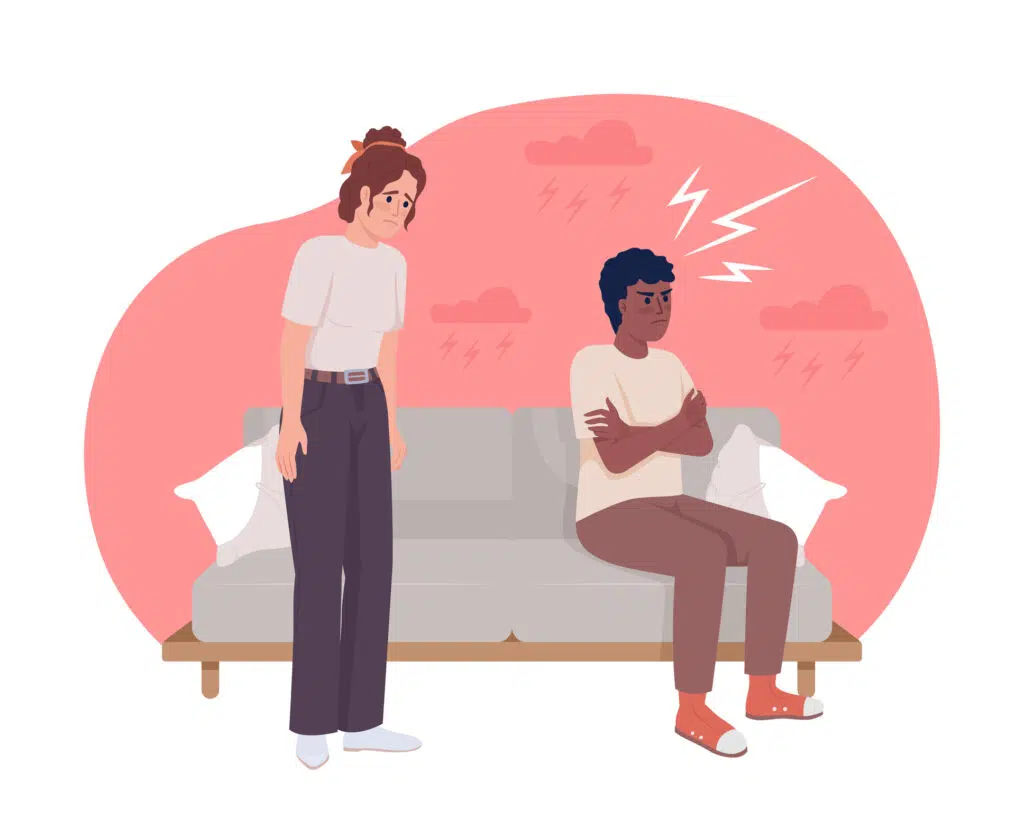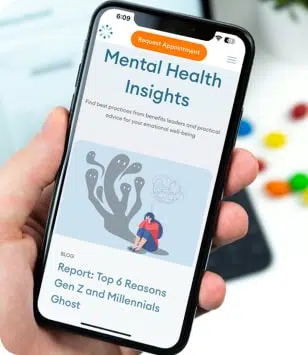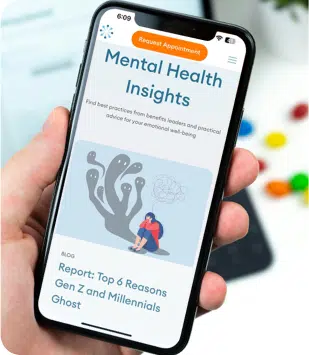Exploring the Benefits of Pet Therapy for Mental Wellness

From young to old, many can enjoy interactions with animals. But pet therapy can benefit people going through all types of challenges in life. In this article, we dive into the benefits of animal-assisted therapy and how animal interactions can promote mental wellness.
What Is Pet Therapy?
Pet therapy, also known as animal-assisted therapy, involves interaction with animals to explore and understand how you feel. Essentially, pet therapy is when animals are included in the therapeutic process. This could be for a number of reasons, including support for physical, social, mental, and emotional health. For some people, including an animal in therapy, can help them feel more comfortable opening up.
Animals are present beings that live in the moment. They don’t judge or criticize. Shifting a person’s attention to an animal can help bring down those walls that stop someone from talking or working through tough emotions and experiences. Creating a safe space through animal interaction can make the experience feel less like therapy, encouraging individuals to think about how they feel in a different way.
Often, dogs are the most common animals used in pet therapy, followed by horses, cats, and rabbits. A pet therapy animal must be calm, obedient, and ultimately, enjoy affection from people. The animal handler will have great awareness of safety and must know their animal well to avoid any potentially stressful or dangerous situations where the animal could react aggressively.
Pet therapy can take place in several environments, including schools, care homes, hospitals, group therapy, and private therapy settings. Typically, an individual would meet the animal in a more informal space for the first contact. Then, a therapist can start to introduce a more formal treatment plan with goals for the sessions. Pet therapy can be used in treatment for a range of mental health conditions, including:
- Anxiety
- Depression
- Autism
- Fears and phobias
- Stress
- Trauma
- Bipolar disorder
You may be aware of emotional support animals (ESA), which are slightly different. Emotional support animals are companions to people experiencing mental health issues. Any domesticated animal of any age can be an emotional support animal. The main difference is that therapy animals are not trained for a specific individual; they are something for many people to experience.
The Psychological and Emotional Benefits of Pet Therapy
Pets can have significant positive effects on emotional and mental well-being. Have you ever felt joy or happiness after stroking a dog? Pet therapy can support many individuals with unique concerns. From stress reduction to better social connection, spending time with pets can provide mental health support for patients.
1. Reducing Stress And Anxiety Through Interaction With Animals
Many people can enjoy the benefits of pets without owning and being responsible for one. Research into adolescents found that following therapy dog visits, adolescents experienced an improvement in anxiety, stress, anger, and related disorders.
Studies have found that interacting with animals can be calming, reducing cortisol levels (the stress hormone). After interacting with a dog, students noticed improvements in anxiety and mood.
While animal-assisted therapy may not be the only treatment approach for stress and anxiety, pet therapy can support people of all ages and backgrounds. People in pet therapy can experience a release of endorphins (the happy chemical). Science shows that endorphins increase in people after a friendly dog visit.
2. Boosting Mood And Alleviating Symptoms Of Depression
Often, treatment for depression involves psychotherapy and medication. Pet therapy may be an alternative for individuals who find it extremely difficult to open up in a traditional therapy setting.
Some studies show that animal-assisted therapy is effective in treating depression in institutionalized older adults. Pet therapy may act as a stepping stone to therapy to encourage someone to open up, which gives them the opportunity to step toward recovery.
3. Enhancing Social Interaction And Communication Skills
Animals are caring and loving creatures that can provide comfort and lower feelings of loneliness. Pets can create an environment that can encourage social connection and interaction while the focus remains on the animal.
One study found that animal-assisted therapy improved social functioning and quality of life in patients with chronic schizophrenia. In long-term care settings, social interaction is often an important part of therapeutic activities. Animal-assisted therapy has been found to enhance resident social interaction and initiation in care facilities.
4. Encourage Physical Exercise
Animal-assisted therapy can help encourage physical movement, which benefits the body and mental health. Increasing motivation to exercise and physical activity can be helpful for someone experiencing mental health concerns. The movement can be as simple as playing or walking with a dog.
Pet Therapy As A Complementary Treatment For Mental Health Disorders
Typically, pet therapy is used alongside conventional treatment. The idea is that it compliments the treatment rather than relying on it solely. Animal-assisted therapy offers a range of therapeutic benefits for mental health disorders like PTSD, autism spectrum disorders (ASD), and dementia patients. Pets may also provide comfort during grief or loss and help ease all those difficult and complex emotions you feel during tough times.
Animal support or pet therapy has been used to treat patients with PTSD. Evidence shows that animals can have a positive psychological impact on patients, but it’s not the only approach used in treatment. Incorporating animals within PTSD treatment can help an individual feel calmer and more at ease so they can work with their therapist towards recovery.
When incorporating pet therapy into a treatment plan, speaking to your doctor or therapist is usually best. You might suggest the idea of working with a facility with the option of pet therapy. A trained animal handler, usually the animal’s owner, would also manage the therapy pet. Your therapist or doctor typically guides sessions as this person most understands your goals, recovery, and treatment plan.
Promoting Mental Wellness With Pet Therapy
Naturally, there are some limitations to consider with pet therapy. It’s important to think about animal safety and allergies to certain animals. Some people may find animals scary, or the concept of pet therapy adds more stress to the situation. It’s down to the individual and whether pet therapy works for them. If you find that pet therapy isn’t working for you, it’s perfectly fine to tell your therapist or doctor that you would like to consider alternatives. The therapy process is personal to you, and your treatment plan will depend on your concerns and goals.
Animal-assisted therapy is not the only treatment for mental health conditions. You don’t replace psychotherapy or medication with pet therapy. But, animal-assisted therapy can help individuals to feel more at ease and bridge the gap to therapy so they can get on the road to recovery and treatment. Spending time interacting with pets can promote positive psychological well-being and support treatment for a range of mental health disorders.
While we don’t offer pet therapy as a service directly, we do have a team of compassionate mental health professionals who are experts in their fields, ready to help. If you have any mental health concerns for you or a loved one, contact the Thriving Center of Psychology team and start your therapy journey today. Book an appointment online or call our offices, which are located in most major cities across the country.

How to Move On After a Friendship Breakup
Friendship breakups can sting just as much as a romantic breakup. After all, you’re experiencing a loss of shared history and an understanding of each other that can leave you feeling lonely and isolated. Not all friendships are forever, but moving on from the loss of a friendship does take time and some self-compassion.

Signs You’re in a Toxic Relationship
A toxic relationship can chip away at your well-being and happiness. Toxic partners can be manipulative and charming, making it difficult to recognize the signs that you’re in a toxic relationship. You deserve to be in a supportive and healthy relationship.

10 Common Marriage Reconciliation Mistakes to Avoid After Infidelity
Infidelity can leave couples devastated. If you’ve been affected by infidelity and want to salvage your relationship, rebuild trust, or make a tough decision, keep reading for 10 common reconciliation mistakes to avoid after infidelity.

Survey: 72% of Americans are Stressing About the Upcoming Presidential Election
Political viewpoints in the U.S. have always been contentious, but is the impact of politics in the United States making it difficult for people to live their everyday lives? With some anticipating another brutal and long campaign season ahead of the upcoming 2024 presidential election, nearly half of Americans say politics is negatively impacting their mental health.




